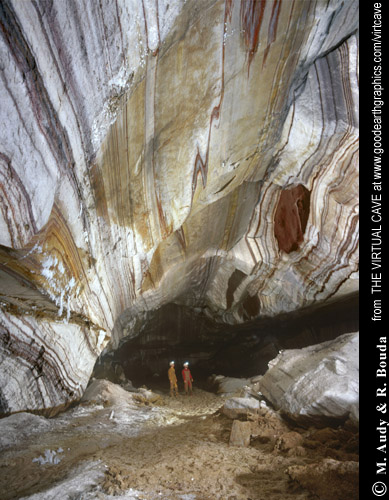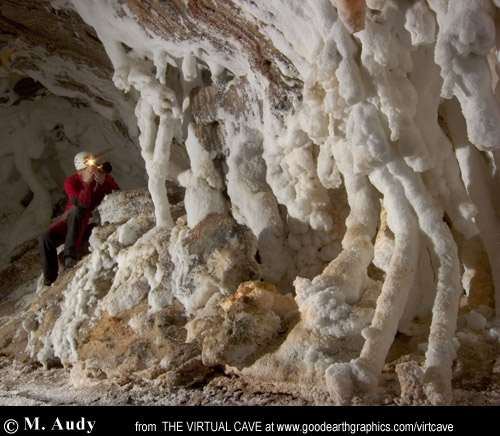
![]()
|
While most solution caves are formed in carbonate rocks (limestone, dolomite, marble, or sandstones cemented by limestone), caves in some parts of the world are formed in a much more soluble material: salt. The most significant of these caves are found in arid regions, such as the Atacama Desert in Chile, Israel, and Iran. Several expeditions by Czech cavers have established the longest known salt cave on Qeshm Island off the southern coast of Iran, the 3N Cave, at 6580 meters in length. Salt caves are dissolved simply by water, not requiring the presence of acidity as does the production of solution caves in carbonate rocks. Found in arid areas as they are, the caves only grow in rare periods following rainfall. And the salt speleothems inside also grow much faster than those in limestone. As one of the Czech cavers, Michal Filippi, explains: "In limestone caves you can see signs saying don't touch the dripstones, they have been growing for thousands of years, whereas in the salt caves they grow for days or weeks after rain, when rainwater penetrates the rock, saturates it and in a month there are half-a-metre dripstones. We can practically watch them grow. Salt crystallises into cubes and beautiful cubic crystals emerge from the brine, unlike in the case of limestone where the sinter is shapeless. We can see beautifully shaped crystals which sparkle in the light." For more information on the 3N Salt Cave or inquiries about editorial use of these images, contact Michal Filippi. |
 Ceiling of the 3N Cave in Iran |
|

Large salt speleothems in the 3N Cave, Iran

Salt crystals form in distinctive cubic shapes
![]()
| Back to: | |
 |
Created: December 11, 2006 Author: Dave Bunnell |
